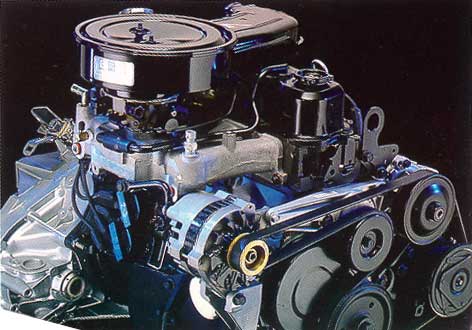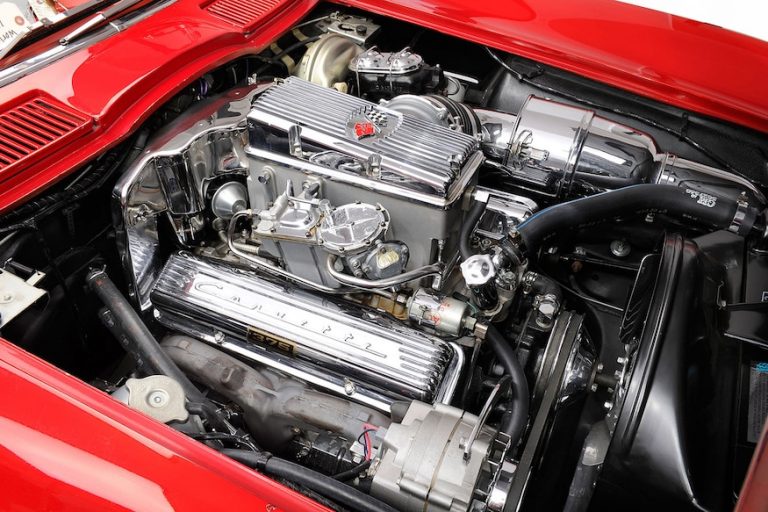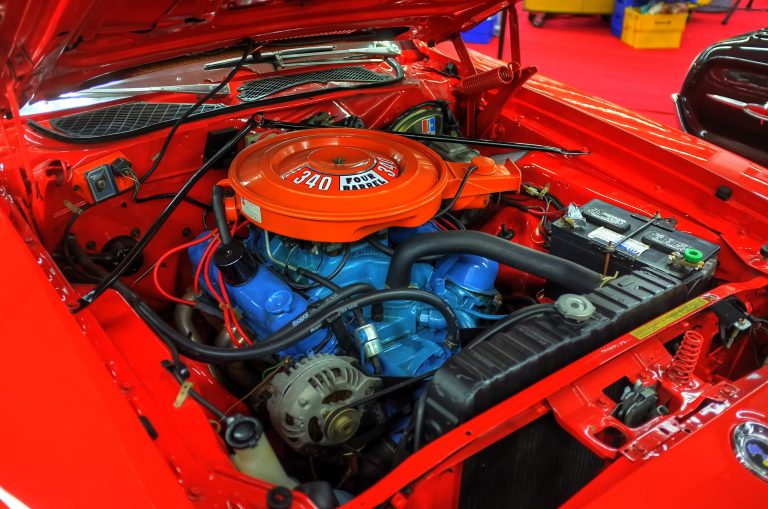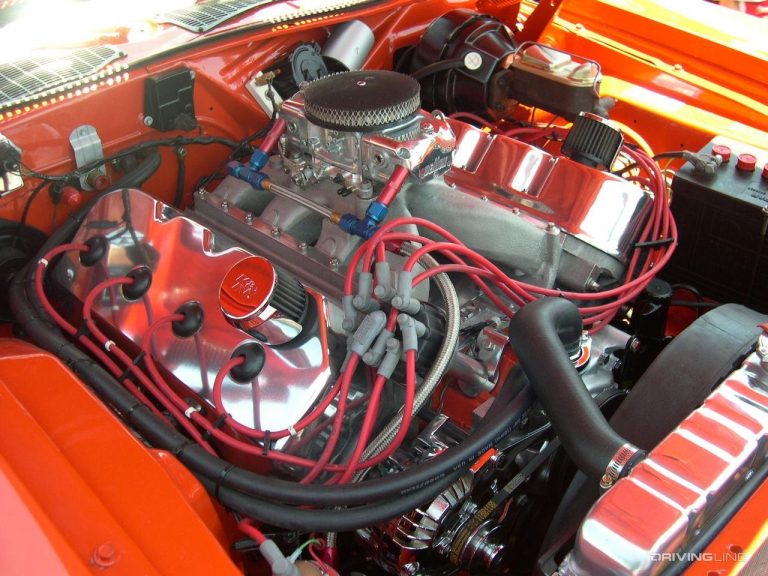America’s 10 Best V8 Engines

Meet Austin
Austin has been a muscle car enthusiast since an early age with his Dad having a collection including a 1965 Mustang, 1968 Mercury Cougar, and a 1969 Mustang Mach 1 among many others. Austin received a technical writing degree from University of Colorado Denver with the intentions of becoming an automotive journalist. His automotive knowledge, enthusiasm, and hands on experience allow him to craft detailed, accurate, and high-quality articles for the passionate Muscle Car Club audience.
America’s automotive identity is straightforward and raw. In the very infancy of our automotive aspirations, stateside car manufacturers understood a basic principle, Americans love to go fast. However, in the beginning, technology didn’t allow for fast. Flathead and straight engine designs, poor compression ratios, and low-octane fuel significantly stifled the pursuit of speed. Luckily, that would change in the decades to follow, when American manufacturers set their sights on developing some of the best V8 engines in the world.
The V8 engine is not an American invention. That’s hard to believe considering that they’ve become our bread and butter. But, the honor goes to the French for that one. With that being said, we were the first to bring the V8 to the masses. Cadillac is credited with delivering the first mass-produced V8 to the world in their 1914 Type-51. Over the next few decades, the V8 would become the undisputed powerplant under the hood of anything American.
Since the 1940s, the V8 has been used in everything from industrial dump trucks to the Chevrolet Corvette. If that doesn’t say something about the V8’s versatility, I don’t know what does. Virtually every American manufacturer worth their salt has produced a V8 engine that they’re proud of. That makes V8 development a competitive and patriotic ordeal. And, as a result, we have been lucky enough to reap the rewards of this competitive spirit with some truly killer engines.
In this article, we’ll cover some of the best American V8 engines ever made. Due to the fact that there are so many options to choose from, there are some utterly fantastic engines that didn’t make the cut. Let us know in the comments if we missed an engine or two that deserves a spot.
Ford 385 Big Block V8
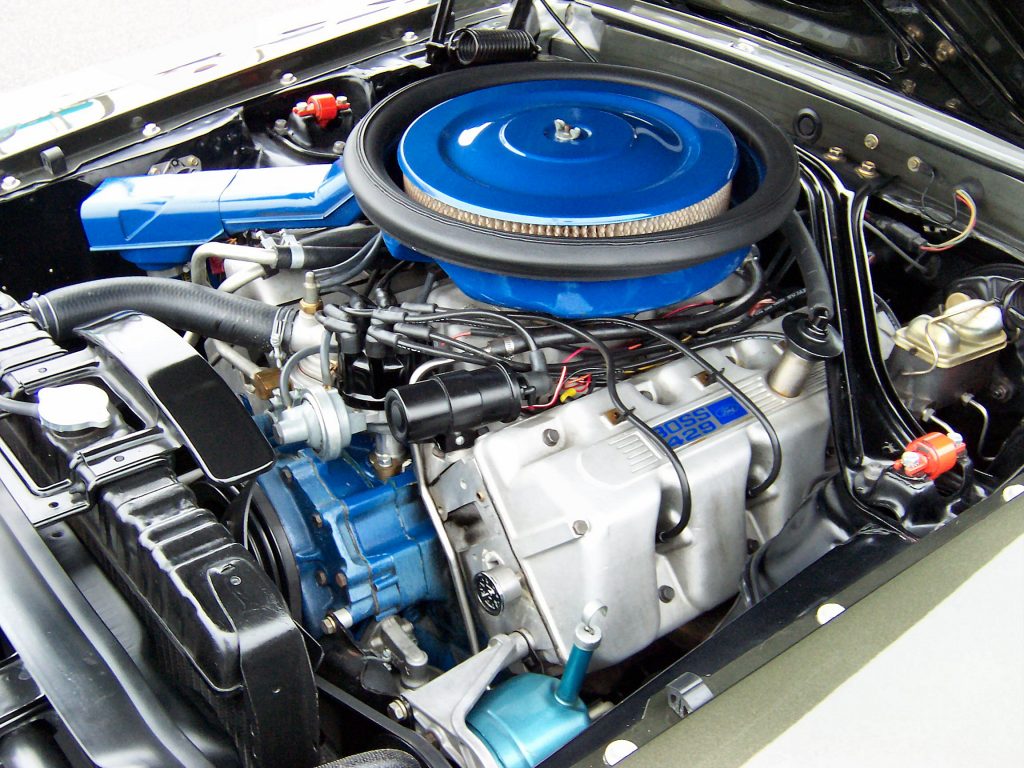
By the time the Ford 385 came around, Ford had already been in the big block game for 10 years with the Ford FE engine series and the Ford MEL engine series. The idea behind the 385 big block hadn’t changed over the generational gap. Ford needed an engine to power their heavy trucks and full-sized vehicles. However, several 385 big blocks were also used in some pretty damn awesome muscle cars.
In the early years of the Ford 385 big block, it was overlooked and not treated with the respect that it deserved. Some of that might boil down to the fact that the 385 big block was very similar in construction to the Ford Windsor small block. While that isn’t a bad thing by any stretch of the imagination, it was a bit predictable.
With that being said, the Ford 385 V8 employed some beneficial strategies to help performance. The engine series utilized thin wall casting methods and a skirtless block to keep weight to a minimum. It also featured high-flow cylinder heads very similar to the ones found on the 351 Cleveland V8. While the 385 V8 is widely known as a duty engine, powering the Ford F, L, B, and C-Series, there were some juicy performance variants as well.
Perhaps the most famous 385 performance example is the 370 horsepower Ford 429 Cobra Jet. It made use of a Rochester Quadrajet 4-barrel carb, a massive camshaft, a special DOOE-R cylinder head, an increased compression ratio, and a host of other goodies. The 429 Super Cobra Jet followed suit with an even bigger carburetor, an even more extreme camshaft, and forged internals.
Pontiac V8

In 1981, Pontiac was forced to give up on their series of in-house V8 engines in favor of shared GM V8s. That is a serious shame. The Pontiac V8 was one of the best in the game, especially in the early-mid 1960s. Pontiac was late to the V8 party, only offering a flathead six or flathead straight eight until 1955.
The early story of the Pontiac V8 began with two brilliant engineers building a solid engine. The initial Pontiac 287 V8 featured cast iron construction, a low-cost block, hydraulic lifters, five-bolt main bearings, and other modern-at-the-time innovations that immediately put Pontiac’s first V8 on the map. The Pontiac 287 served as the basis for the rest of the manufacturer’s V8 entries. They increased displacement incrementally through the years.
Unlike most other manufacturers at the time, Pontiac did not split their smaller and larger displacement engines into small-block and big-block categories. Instead, they classified them as either “small journal” or “big journal” engines based on their main journal size. The Pontiac 389 V8 was the engine that changed the game for Pontiac and arguably the entire muscle car scene. While the 389 V8 was used in every Pontiac model for the 1960 model year, its placement in the GTO launched the beginning of the 1960s muscle wars.
The 389 also marked the beginning of Pontiac’s NASCAR success. In 1960, the 389 Super Duty dusted the competition in a dominant display. Pontiac Bonneville driver Glenn Roberts would also raise the speed ceiling of the sport to unexplored heights. That year, he piloted his 389-powered weapon to over 150 miles per hour while qualifying for the Daytona 500.
Oldsmobile Rocket V8
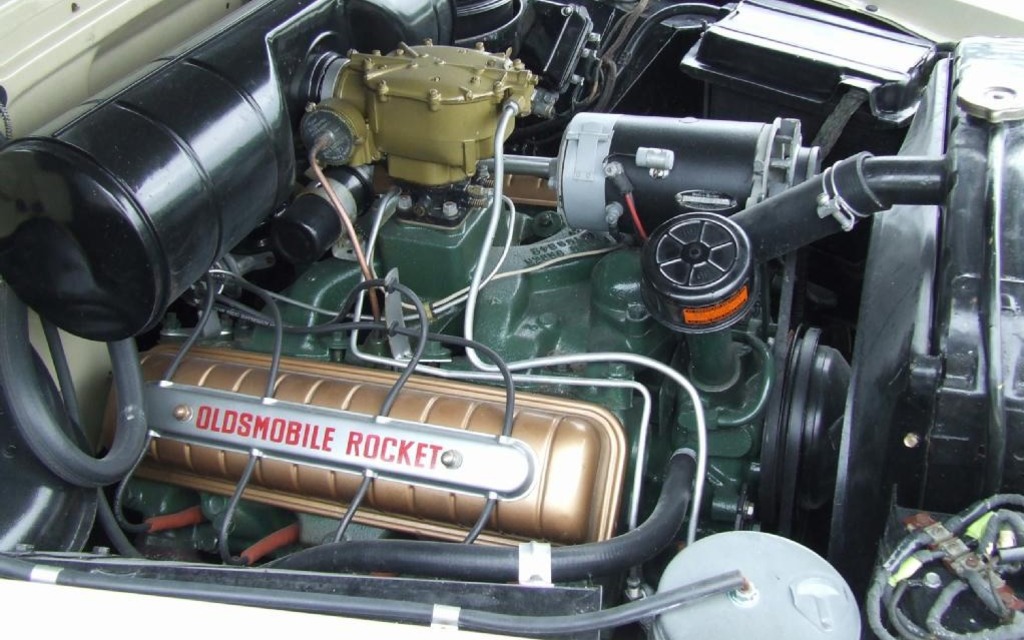
As one of the first automotive manufacturers in the United States and the oldest in the GM conglomerate, Oldsmobile had experience on their side. Throughout the early 20th century, the American engine landscape was starting to take shape. Many brands experimented with what did and did not work. By the 1940s, V8s had begun to surpass the popularity of the straight-8 engines that had dominated the inter-war period. A lot of this newfound popularity for V8s could be attributed to Oldsmobile.
In 1949, Oldsmobile set a new precedent for what a V8 engine needed to achieve. The Oldsmobile “Rocket” V8, as it would later be called, became the second overhead valve crossflow cylinder head V8 in GM’s arsenal (only months after the introduction of the Cadillac OHV V8). Prior to the Oldsmobile “Rocket” V8, most of the main American manufacturers employed flathead engines. Flatheads featured valves located in the engine block itself. The OHV V8 solved many of the issues caused by the flathead design. Restructuring the engine to feature valves mounted in the cylinder head meant that the combustion chamber could be redesigned to a much more efficient shape, also improving gas flow and compression ratios.
The Oldsmobile Rocket V8 became known for a couple of things. It laid the foundation for the muscle car era of the 1960s and was an uncompromising brute of an engine. The Oldsmobile Rocket V8 was first found in the 1949 98-Seres. However, it would be the Rocket’s placement in the A-body Oldsmobile 88 that cemented the Rocket as one of the most important V8s in history. The Olds 88 was so ahead of the competition that there was little room for anyone else.
Buick Big Block V8
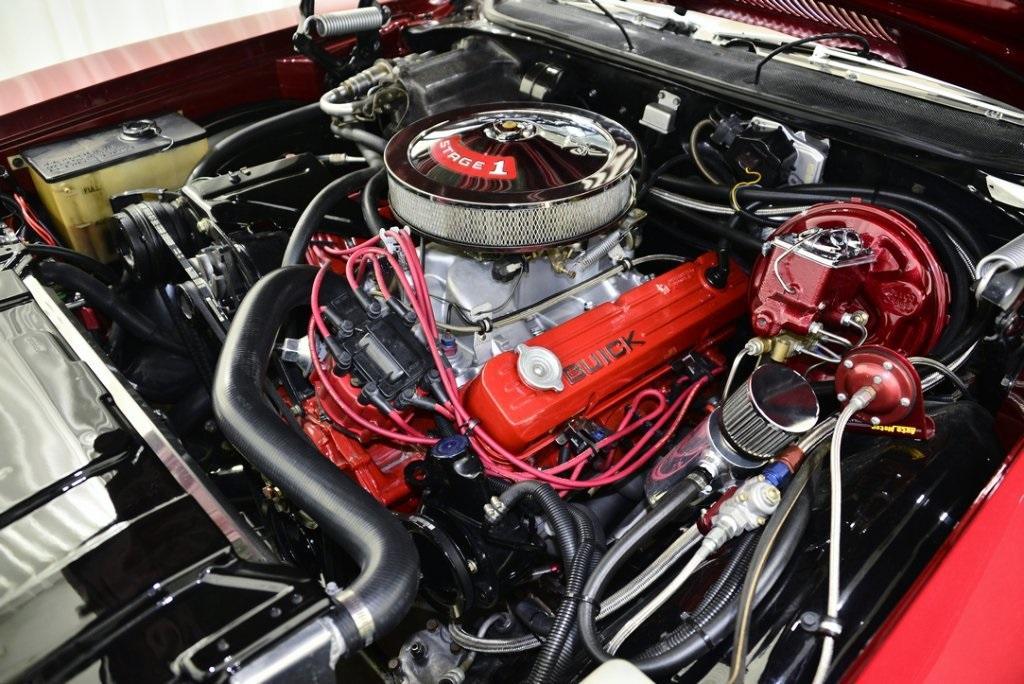
As far as influence is concerned, Buick marked their place in V8 history early and continued to expand on their legacy. The Buick “Nailhead” V8, named for its unique, nail-esque-looking valves, was an early torque monster of the hot rod era. The Buick Nailhead V8 went through two iterations before being replaced entirely by the Buick small block V8 in 1966.
While the small block filled the gap left by the 364 Nailhead, none of the Buick small block V8s could touch the performance of the Buick 401 Nailhead and Buick 425 Nailhead, which powered some of Buick’s flagships including the Buick Skylark Gran Sport, Buick Wildcat, and Buick LeSabre.
To bridge the gap, Buick developed the Buick big block V8 in 1967. The Buick big block was produced in three different displacements: the Buick 400, Buick 430, and Buick 455. The earliest Buick big block was an attack on GM’s 400 cid displacement cap, riding it up to the line. The 400 was found in the Buick A-Platform, and provided plenty of power for a mid-size chassis. The 400 was followed up by the Buick 430 V8 big block. The 430 V8 carried the B, C, and E-body cars to dragstrip victories of their own.
However, it wasn’t until 1970 that the Buick big block V8 was fully actualized. That year, Buick released the 455 big block V8. It was a four-barrel, 510 lb-ft-pushing firebreather that left nearly every foe in its wake. In addition to its ludicrous horsepower and torque output, the 455 was one of the lightest big blocks at the time as it was one of the first GM engines to use thin wall casting, making it a progenitor of the technology.
Chrysler RB V8
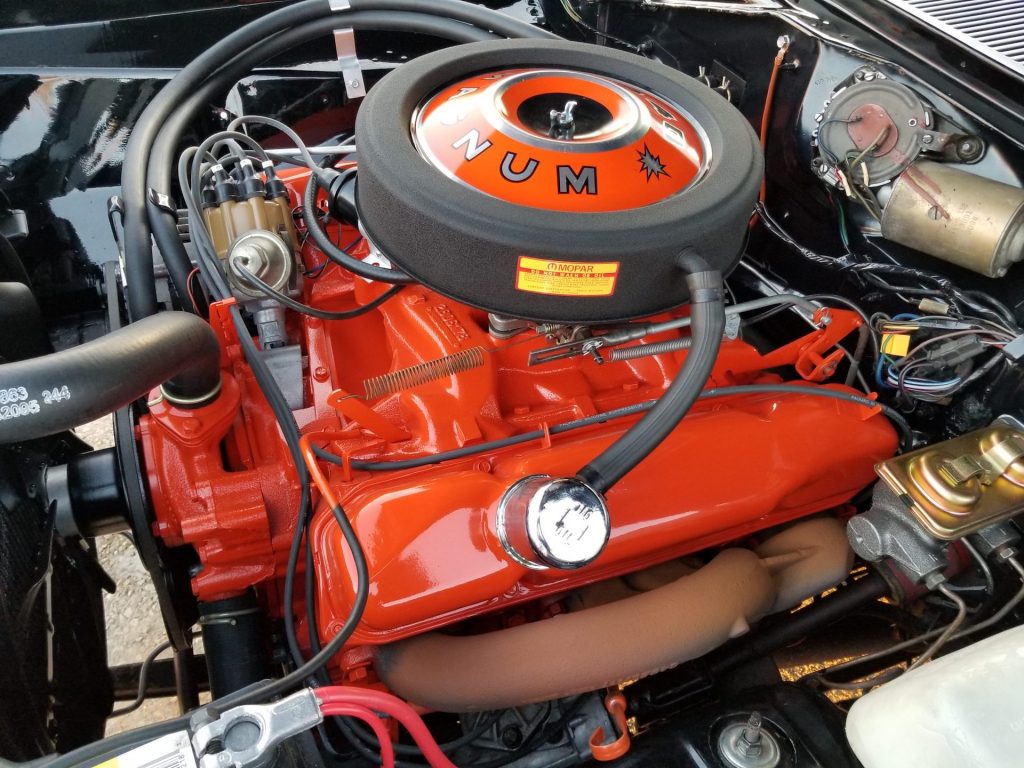
When it came to beastly V8s, Chrysler was really hitting their stride in the late 1950s. We already covered the Hemi and now we’ll cover the engine series that replaced the first-generation FirePower Hemi. Chrysler launched the B-series big block in 1958 with yet another unorthodox approach to combustion chamber design. While Chrysler had hit a jackpot with hemispherical combustion chamber designs, the B-Series V8 featured a wedge-shaped combustion chamber. Like the Hemi, the B-Series got an appropriate nickname; the Wedge V8.
While the B-Series of Chrylser V8 engines set the design precedent for later models, the Chrysler RB series took the wedge V8 concept up a notch. Literally. Chrysler wanted to make more power from the wedge formula, necessitating either a larger bore or a longer stroke. They chose the latter and decided to raise the deck height of the RB V8, increasing the stroke by ⅜”. This increase made the smallest displacement RB V8 383 CID. Chrysler would continue to increase the bore of the RB V8 to include the 413, 426 Wedge, and Chrylser 440.
The Chrysler RB V8 became the main weapon in their arsenal, used in all New Yorker and Imperial models. While the 413 Wedge served as the civilian option, the 426 Wedge V8 went even further. With up to 421 horsepower on tap, the 426 Wedge became Chrysler’s A-bomb on the track. The later track-only Max Wedge V8 cranked the already potent V8 up to 11 with 425 horsepower.
The Chrysler 440 was the last entry into the RB engine series. With an increased bore of 4.32” it is the largest displacement engine in the series as well. Producing 375 horsepower, the Chrysler 440 is an underrated hero of the mid-1960s-late-1970s era, often overshadowed by the 426 Hemi.
Chevrolet LS Small Block
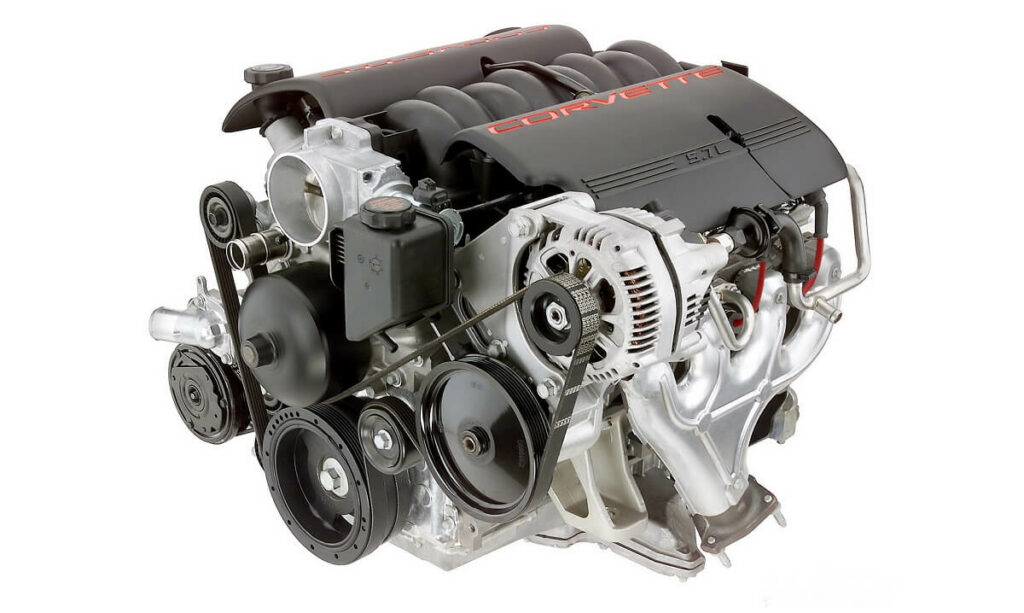
When the Chevrolet LS engine series was introduced to the world in 1997 with the LS1, it marked a massive seismic shift for American V8 engines. Previous Gen I and Gen II Chevy small blocks were very much products of the 1950s. Their design reflected that. While they were unquestionably legendary in their own era, the LS small block’s clean sheet design set a new precedent moving into the 21st century.
The improvements made to the LS compared to Gen I and Gen II Chevy small blocks were numerous and wide-ranging. LS engines are much lighter than older small-block Chevys due to their aluminum block, which is also stronger. Other important strengthening modifications were also added to the LS V8’s design. These included a skirted block, 6-bolt main bearings, strengthened crankshaft, powder-forged connecting rods, and hypereutectic pistons, just to name a few of many. That means that the LS small-block bottom end can handle nearly twice the power of earlier small-block V8s.
There are a ton of LS small blocks out there, too. Over 100 million LS small blocks have rolled out of numerous Michigan-based GM plants. That makes the LS platform one of, if not the most, popular V8 engine series in history. As a result of their strength, abundance, and simplicity, the LS engine series has become the grassroots hero for any type of racing series that you can think of.
There are very few cars under the sun that haven’t had a Chevy LS heart transplant. That should not only speak for GM’s commitment to quality and tradition but also to the diehard community that enjoys the LS unendingly.
Second Generation Dodge/Plymouth 426 HEMI
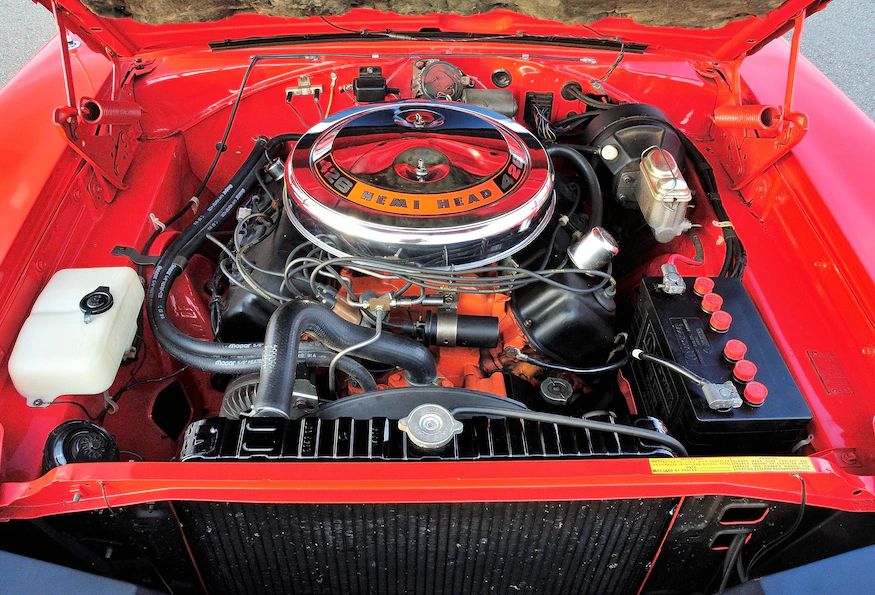
Every once in a while it pays to be a bit unorthodox. As one of the only manufacturers to live and breathe by the hemispherical V8 engine design, Dodge and Plymouth’s oddball powerhouse not only defines a massive subsect of American muscle car culture but also proves that huge power and huge engines are the lifeblood of American V8s.
Of course, the HEMI story begins far before the 426. Chrysler’s first attempt at a hemispherical car engine design came in the early 1950s. Using the knowledge that they acquired during World War II airplane engine production, Chrysler realized that the superior heat dispersion and combustion efficiency properties of a hemispherical combustion chamber also made sense for high-performance road cars. Out of that realization came the Chrysler Firepower V8, a legend in its own right.
Despite the massive success of the Firepower HEMI-powered cars, Chrysler’s first HEMI design was discontinued in 1958. The HEMI recipe itself was shelved until 1964. Luckily, the return of the hemispherical head design would produce one of the most famous muscle car engines of all time, the 426 HEMI. After all, the 7.0L HEMI was born out of Lynn Townsend’s obsessive need to win NASCAR. The 426 HEMI hit the public streets and strips in 1966 due to NASCAR’s homologation requirements that required that racing engines also appear in roadgoing models.
Amongst these road-going racecars were some of the most famous names of the American muscle era. Some of the most notable examples include the Plymouth Roadrunner/Dodge Charger Daytona, Plymouth HEMI ‘Cuda, and Plymouth GTX. The 426 HEMI and the cars that it was used in are cemented in nearly every muscle enthusiast’s memory.
Ford Small Block V8
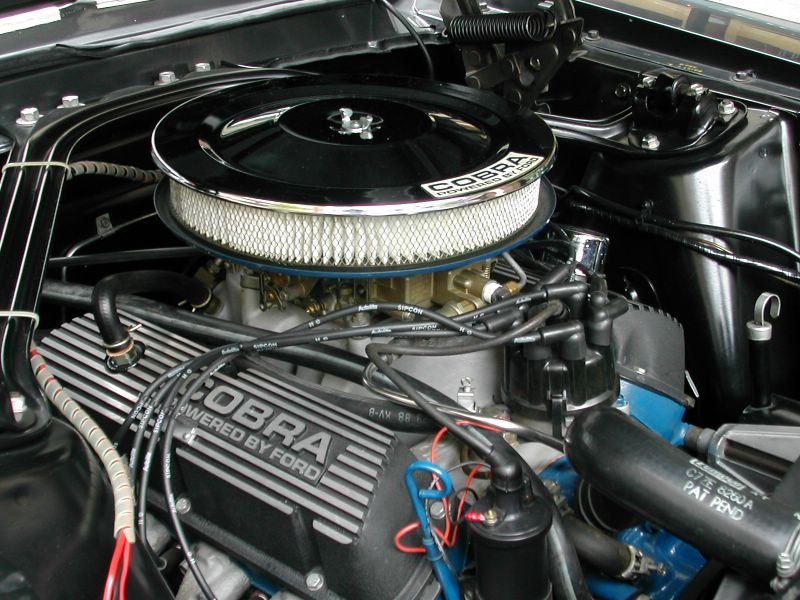
When Ford released the Windsor V8 in 1961, there’s little chance that they knew it would be a half-century design. The Ford small block was the replacement for the short-lived Ford FE engine series which in itself replaced the even shorter-lived Ford Y-Block. Over the course of the Windsor V8’s herculean run, it not only powered some of the most important Fords in history but some of the most important American cars of all time.
Ford’s small block V8 was an engine designed with a specific purpose in mind: replace the antiquated, heavy, and underpowered V8s of the 1950s with a lightweight V8 design that could rival the small and efficient 6-cylinder engines that were arriving on the scene in the early 1960s. That’s exactly what they did, putting the engine to good use in nearly every major car Ford had to offer.
The Ford small block began life as a 221 cu in engine but was quickly bored and stroked to include the 260 V8, 289 V8, 302 V8, and 351 V8. While the 221 and 260 V8 are certainly praiseworthy, with nearly a million units produced between them, the Ford 289 V8 and Ford 302 V8 are the real stars of the Ford small block family.
The Ford 289 V8 replaced the 260 small block as Ford’s go-to V8 for all of their full-size offerings. Additionally, it is the engine that defined the Mustang in its early years. Later versions of the 289, like the 289 HiPo powered cars like the Shelby GT350 and GT40 and became crucial in Ford’s racing endeavors. The Ford 302 V8 was equally important. It originally appeared in the GT40 MkV and trickled down to Ford HiPo cars like the Boss 302 Mustang.
Big Block Chevy V8

Let’s be honest, it’s no surprise that both the Chevy small block V8 and the Chevy big block V8 have earned a spot on this list. In many ways, Chevrolet V8s are the benchmark that all other American V8s are measured against. While the small block Chevy showed the world that they could build a solid V8, the big block Chevy cemented them firmly at the top of the pile.
The immediate need for a larger displacement engine arose for Chevy in the late 1950s. Cars and trucks were getting larger and heavier. This meant that more power was needed. Chevrolet approached the problem in the only way they knew how: more displacement. Fortunately, the strategy worked extremely well, with the first W-Series Chevy Big Block seeing an engine bay in 1958. The W-Series started Chevy’s big block frenzy, but the later generations would be the fan favorites.
The Chevy Mark IV Big Block debuted as the 396 in the full-size 1965 Impala and the Chevrolet Corvette. These early big-block Corvettes would go on to become some of the most sought-after collector cars in the world. While the Mark IV big-block V8 shared numerous design similarities with the older W-Series, it was also dramatically improved. The Mark IV ditched the W-Series chamber-in-block design, and adjusted valve and spark plug angles among other important tweaks.
The Chevy Mark IV big block introduced the 366, 396, 402, 427, ZL1, 454, and L19 into the picture, making it one of the most famous V8 engine lineups to ever grace the planet. The Mark IV Chevy big block firmly straddled the line between performance and function in a way that no V8 had before.
Small Block Chevy (‘55-’03)

This entry on our list shouldn’t be a surprise to anyone. The small block Chevy V8 is the ultimate blueprint for American V8 design. It inspired a generation of tire-smoking, strip-loving enthusiasts to fiddle, experiment, and optimize their way to the top of the timing sheet. Just as the Chevy LS revolutionized the pushrod V8 in the modern era, the SBC V8 created a disruption in the system that endures to this day, nearly 70 years later.
The small block Chevy began humbly but with an undeniable air of potential. Starring front and center in the 1955 Corvette, the 265 SBC was a force to be reckoned with and an engine that immediately captured the interest of hobbyists looking to decrease their quarter-mile times. The small block Chevy would grow a lot over the course of its 50-year run. Between 1955 and 2003, the Chevy small block grew from 265 CID to 400 CID with dozens of variants between.
While the small block Chevy is known for nearly every aspect of its design and performance, one of the aspects that has made it so popular among so many people is its versatility. Since all Chevy small blocks share the same DNA including the same 4.400” bore spacing, parts interchangeability is nearly limitless. You can put the heads from a 1990s Vortec truck on the original 265 SBC. There are very few engine series in history in which you have that freedom.
The small-block Chevy V8 is almost undisputedly considered the best V8 engine series in history. From its reliability, to its power potential, to its widespread availability and affordability, the SBC is truly the American V8 to end them all.

